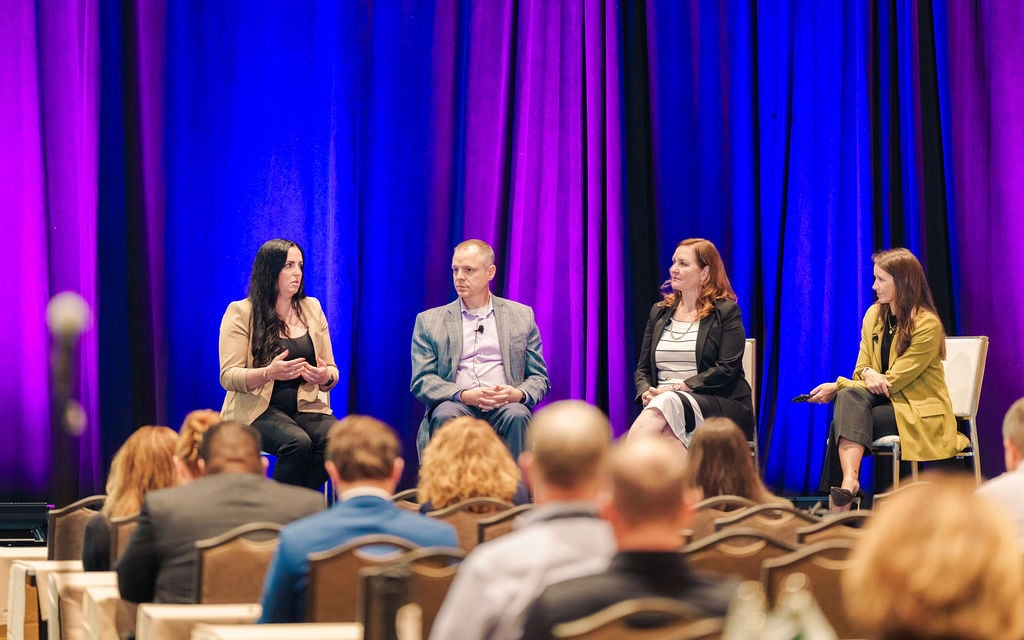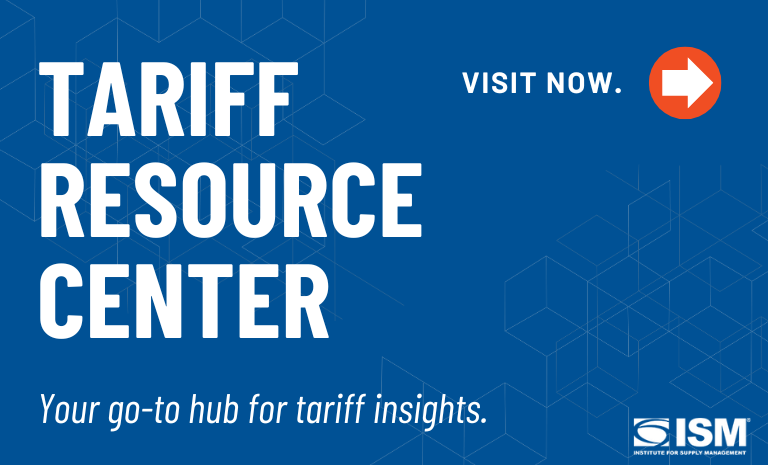ISM World 2025: A Game Plan for Supplier Innovation

(From left) Katie Huard, Brandon Phillips, Lara Nichols, CPSM, and Ashley Hetrick during their session “Supplier Innovation: The Winners, the Losers and What Sets Them Apart” at ISM World 2025 on Tuesday. (Yannick Apers Photography)
Not all companies produce innovative products, but every company should be interested and invested in innovation — especially from suppliers.
Wesco International, for example, is well-established in its space of electrical, industrial, communications and construction products, but “there’s no preconceived notion that the way that we’re doing that is the only way that it can be done,” said Brandon Phillips, vice president of supply chain at the Pittsburgh-based company.
At Wesco and other companies, innovation requires a strong planning process, cross-functional collaboration and effective communication with suppliers. Those dynamics were among those discussed during “Supplier Innovation: The Winners, the Losers and What Sets Them Apart,” a panel discussion on Tuesday at ISM World 2025, Institute for Supply Management®’s (ISM®) Annual Conference at Orlando, Florida.
“Everyone is under increased pressure to improve the bottom line and drive top-line revenue,” said Ashley Hetrick, principal, sourcing and supply chain segment leader at BDO. “One of the things we’ve all observed is that collaborating with our suppliers is critical to making those leaps. It provides a great opportunity for us to help add more value to organizations at a time in which R&D budgets may be constrained.”
Hetrick moderated the discussion between Phillips; Lara Nichols, CPSM, head of global procurement at Flatiron Health; and Katie Huard, senior director of procurement at Blount Fine Foods. Their companies and products are different, but the strategies are similar: leverage supplier relationships and communication to identify efficiency and innovation opportunities.
“Find key challenges to share,” Phillips said. “Develop a Venn diagram — and determine the things in the middle to work on together to deliver value for customers.”
Huard said that regular scorecard meetings and annual supplier summits are a key driver of innovation, or at least communication, at Blount Fine Foods. “Suppliers are looking how to improve because I’m not their only customer,” she said.
“They have a chance to present innovation and tailor it to my needs. Give me information versus just coming with three ideas. Show that you know what you’re doing, what you’re seeing in the market what the headwinds you’re facing. That helps spark conversation.”
Communication with internal company stakeholders is important, Nichols said: “Start with C-suite conversations and set a foundation of understanding. Timing and investment have to be established up front. Starting at the COO level is the best way to ensure alignment.”
Key Takeaways
- Effective supplier relationships are best done in person, especially post-coronavirus pandemic. “Get that face time back,” Huard said. “Go see the plant or take a supplier out for a long lunch.”
- Stakeholder alignment is critical. Communicating with operations, sales and other functions not only helps procurement learn a company’s key challenges, but also fosters partnership.
- “Boundaries often perceived, not real,” Nichols said. Don’t be shy about influencing.
Quote
“We’ve got to boost profitability together. Suppliers want that too, so it becomes a collaboration. You might change packaging to make more efficient use of warehouse space, because rents are so high, or to meet sustainability goals. The TCO line is where we’ve seen the best success (with suppliers). What areas can we change together?” — Phillips

